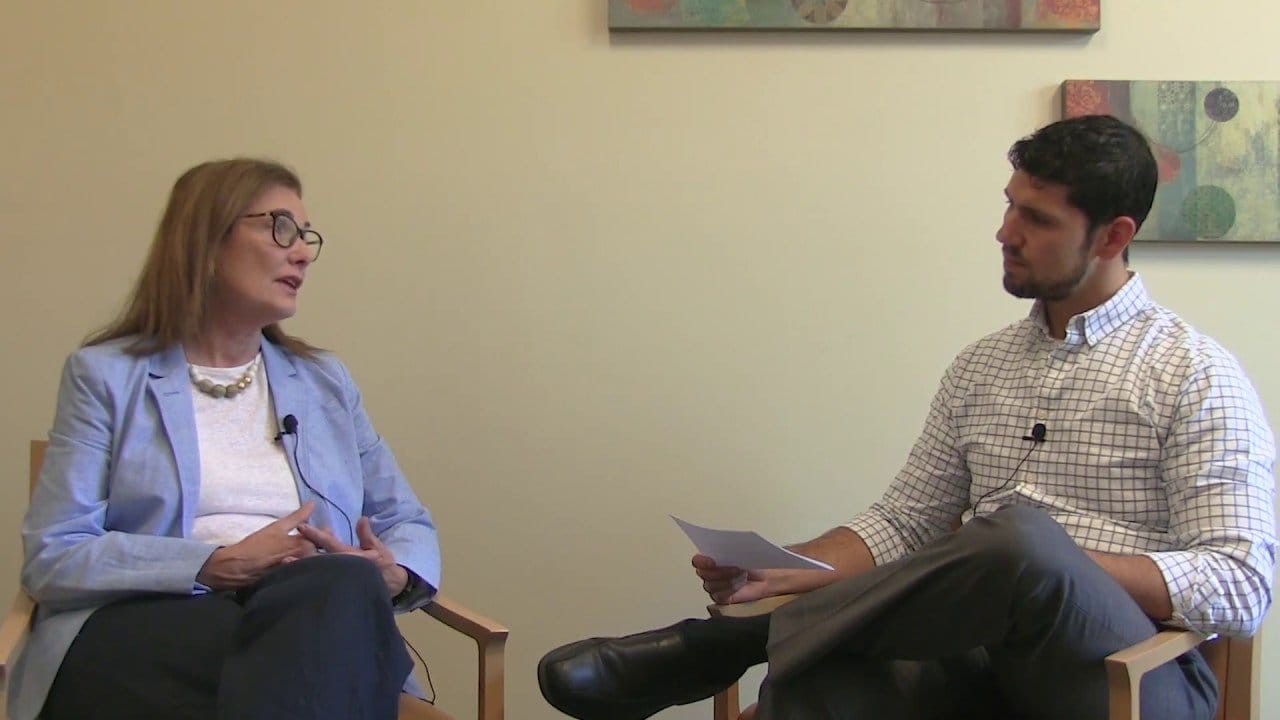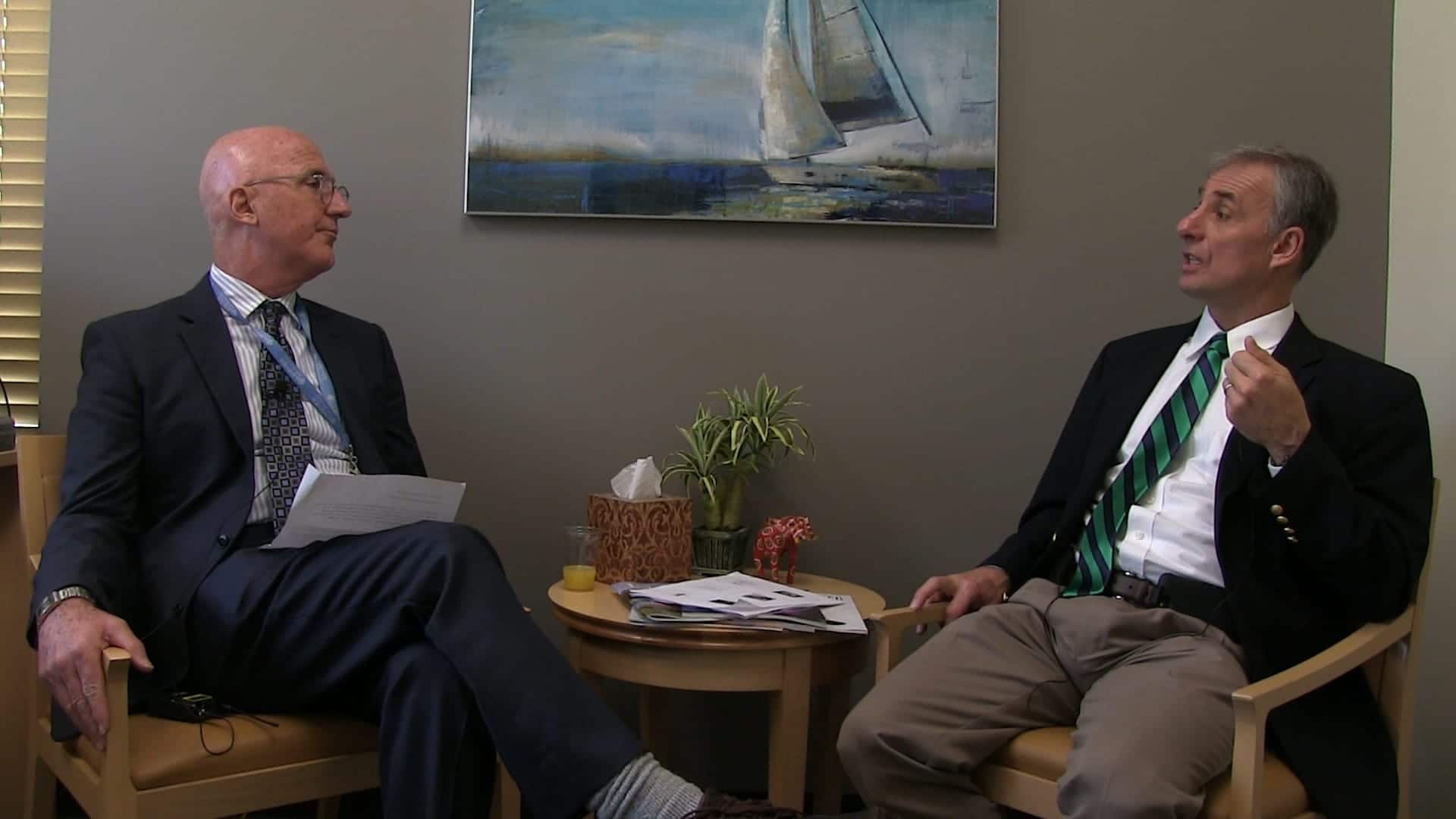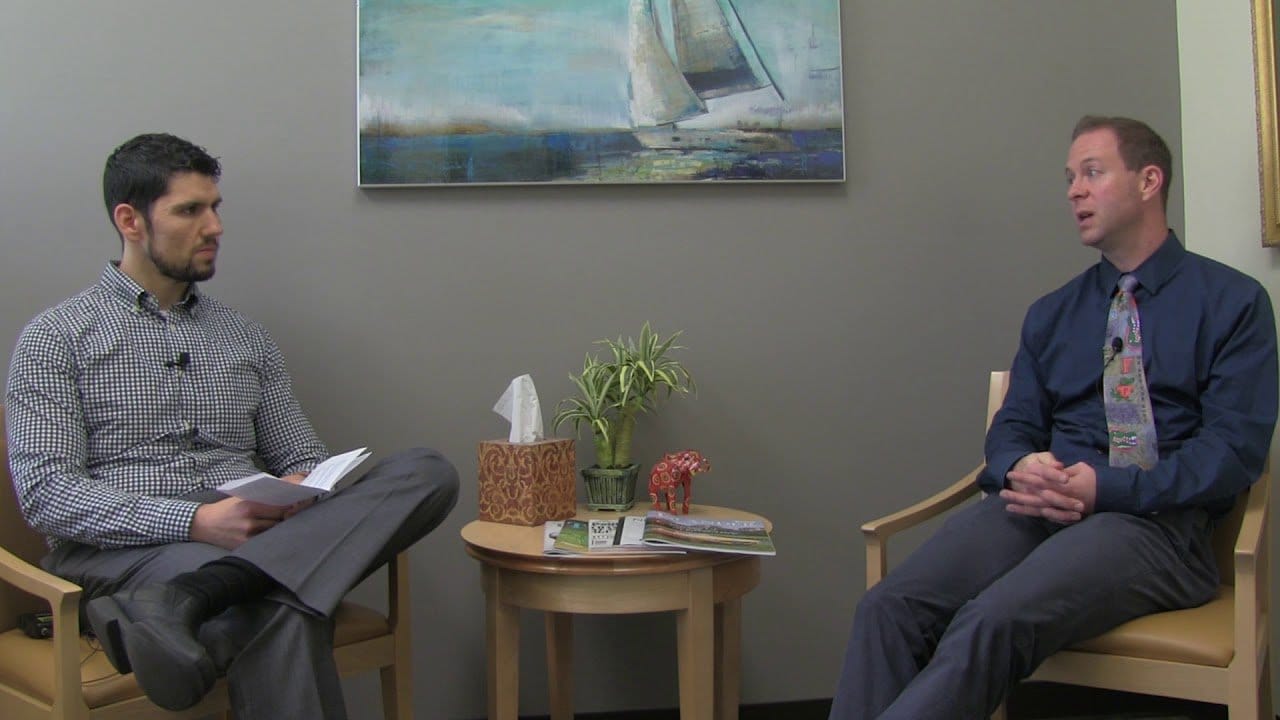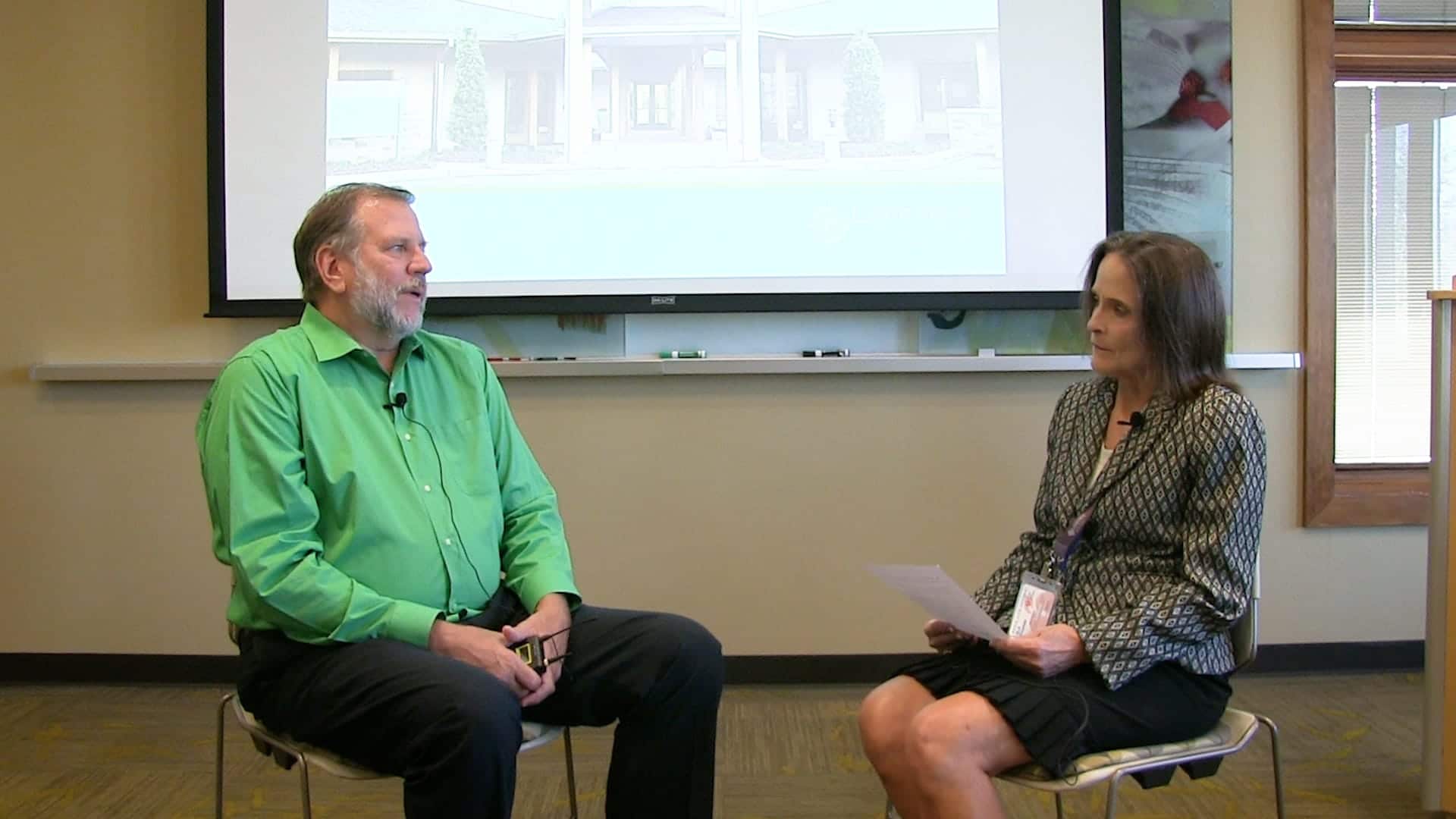This podcast introduces Roy Serpa, president and CEO of Lakeview Health. Roy discusses his background and the transformations at Lakeview in 2013. He explains his goals for Lakeview, how he sees the culture at Lakeview evolving and how that will help bring about an evolution in patient care.
Podcast Transcript
Gina Thorne: Hello everyone, this is Gina Thorne. I’m with Lakeview Health and I’m here today to meet with CEO and President Roy Serpa for Lakeview Health. Today we’re here to talk with Roy about the philosophy regarding organizational culture and the role it plays to create a successful addiction treatment program here at Lakeview. We’re very excited to hear more about Roy’s philosophy and how he was able to work, turning organizations around in the past, but also what the future looks like here for Lakeview. Welcome, Roy. Roy M. Serpa: Thank you, thanks. Appreciate it. Gina: Can you tell us a little bit about your background and what drew you to the role at Lakeview Health? Roy: Sure. Just to step back a little bit, I’ve been in healthcare for 29 years. I’ve focused primarily on ancillary service organizations, organizations that are in the non-acute area, in particular in home health, home infusion. But I’m extremely excited about coming on board at the beginning of the year with Lakeview Health. And my expertise over time has developed more and more into the cultural and operational expertise of an organization. In other words, with my progressive prior roles in sales, and the last 20 years, in operations, I’ve honed my leadership skills in particular to help entrepreneurial companies and family-run organizations to move to the next level, to be more professionally based. But underlying all that is the culture of the organization. My leadership philosophy is that you can’t really move an organization into a long-lasting, legacy-driven organization and be successful with your employees without having a very strong culture. So that’s the basis of what we’ve been working on here, is laying that foundation and we hope to move that in the next 3 to 5 years into a true center of excellence. Gina: Great. And with leadership roles in such a diverse group of organizations, what bound these experiences together? What did you see as the biggest contributor to change? Roy: I think the biggest contributor to change is getting everyone on the same page related to the culture that they’re going to develop as a team. That obviously all starts at the top with leadership, so in order to do that, you’ve got to have a leadership style that can foster that type of work environment. And that type of work environment that we’re trying to develop and have already made some really great progress in is a servant leadership-oriented approach. A servant leadership-oriented approach, as compared to more of a micromanagement or dictatorial approach is more bringing the team in to make decisions. So at the leadership level at the top, at the top we have roughly 15 leaders in the organization at the top level. We make decisions together as a team. Now as the CEO, I can make a final decision, but it’s not smart to do that continuously. It’s very important to get the leaders and get their buy-in because they have a lot of the great ideas that we need to use for the future. In addition to that, as we continue to develop our culture throughout the organization, we’re going to bring more and more of those folks that are what I call the “server level” – those that connect with the patient every day – the MHTs, the nurses, the therapists, so that we can then block and tackle and help them be better at what they do, and have – to where they can really enjoy their career. If they feel that we’re really supporting them and supporting their efforts, they’re going to take care of the patient better than they ever would before. They’re going to wake up each day and really want to come to work and not dread that they’re just working here for a paycheck. Along with servant leadership, I think it’s important to note, you can have servant leadership, but if it’s not with employee empowerment and accountability, that you’re really not developing the team from a bottom-up perspective. You can really serve your leaders and serve your server level folks, and employees that are connected with the patient every day, but if you’re not making them accountable for what they are doing along the way, it can make for an entitlement type of an environment. So we’re trying to thread that needle right to where we’re developing them, but also asking them to be accountable along the way for themselves, in particular, because that’s our focus, but also that in turn will help the patient. Gina: And do you find with the servant leadership concept as it plays a part with addiction treatment facilities – do you find that that’s the norm, or do you think that this is a fairly unique thing that we’re seeing here at Lakeview? Roy: Well, I’m surprised, actually. From the conferences I’ve attended this year, which is many, as you know, I’ve not come across hardly any that have the focus of the servant leadership accountability, employee development type culture. We’re very transparent, where everybody knows what decisions are being made from the top down. So an example would be, I will talk about our financials, I will talk about what we’re doing programmatically, what we’re doing facility-wise, with every employee, in our all-staff meetings or in town hall meetings. And I don’t sense – because I’ve met with several leaders in substance abuse treatment centers, that they’re not [sic] doing it that way. I think it’s more old school and I think, you know, we hope to be a breath of fresh air for the industry moving forward with these type of principles that are grounded in focusing on the employee because they take care of the patient. And instead of just being focused on somebody who’s just pushing paper in an ivory tower office. Gina: And this one pretty significant change that we’re seeing here at Lakeview is going to be one of many that we’ll have over the next 3 to 5 years. How do you see servant leadership playing a role in the growth of Lakeview Health? Roy: Because without that foundation of the servant leadership approach, you cannot build the next two or three levels that you want to do in an organization. So, let me back up. So, the first year or two, you’re going to spend a lot of time on the leadership, a lot of time on the culture. And then when you add either improvements in the facility or new facilities or new programs to your treatment program from the medical side and the clinical side, once a team is in that type of culture for a two- or three-year period, what happens is they end up weeding out those folks that cannot stay on the bus and be part of the team that are strong players. You end up finding out that the team at the different levels in the organization – the server level, middle management and the executive level – will start fostering out and pushing out those who don’t play nice with each other, in the sandbox, for lack of a better term, and they’ll start attracting folks that want to come to Lakeview because we’ve become an employer of choice. And that’s the exciting part. And once you add more pieces to it, it really just, the momentum just picks up. Gina: And I think what we’ll see also is not just the level of commitment from the employees but obviously the trickle-down effect it will have, with the patients and the families as well. Which leads me to my next question, which is, so where are the biggest opportunities in addressing the needs of patients, families and referrals for the larger community? Roy: I think for Lakeview, besides the cultural things we talked about related to how we’re going to treat the employee, which is going to directly impact every day the treatment that patient goes through – so that is, it’s kind of an intangible, but it’s probably the most important thing that we do up front and continue to foster throughout the next 3 to 5 years. But on top of that, we’re going to add to that, additional experiential experiences for our patients. We’re going to add a new gym. We’re going to add a conference center for referral sources. We’re going to add a pool. We’re going to add other types of equine therapy, other types of experiential experiences that they can have that’s a part of their treatment, and not just the recent things that we’ve added such as yoga and an exercise therapist. We think that the combination of those things, by having employees that are excited about what they do – therapists, nurses, MHTs – on top of the other additional things that we’re going to do programmatically, it’s going to dramatically make an impact on those patients. We’ll have less patients want to leave early. We’ll have patients who want to stay their full length of stay. We’ll have patients when they’re leaving to be excited to start their sober living in their new environment, once they get back home, and I think that will all pay off over time. Gina: And what would you say this all means for professional providers when they’re referring a client to our program? Roy: A great question. I think what that means is, first off, they’ll know that the patients they refer and send to Lakeview will get their 42-day stay from detox to IOP to get ready to discharge to home, that they will know that they’re getting the best center of excellence type of care. On top of that, they’re also going to be routinely communicated with, kind of on a treatment plan basis of what they want communication back to them. Because if they refer to us, they should get routine treatment communication back from our therapist on what’s going on with their patient. Within 24 hours to 72 hours, and then weekly. Or, if they want it more often and they request it up front, we’ll make sure and do that. And from what I’ve heard in the community, the substance abuse community, a lot of referral sources have mentioned that they just don’t hear until they’re discharged about what’s going on with their patient through treatment. And we’re going to make sure that communication, just like we’re doing with our own patients – our own employees, excuse me – we’re going to do that with the patients, too, to the referral sources. Gina: It’s a smart move when you think about the work that we do with our referral sources, to engage them with our treatment team. And I think that the opportunities that we have coming up at Lakeview will inspire people to want to learn more. Is there anything else that you think is important for the community to know about in regards to Lakeview and its future here in Jacksonville? Roy: Well, I think we spent a lot of time just recently on an outreach effort in the Jacksonville community. Because, for a lack of a better way to say it, we were either not known in the Jacksonville community, in the North Florida area prior because we were a primarily internet-driven organization from a referral perspective. And now that we’re becoming more outreach, we’re going to get very connected with the community – locally, then regionally, then nationally. And we’re going to support the community in a lot of ways. We’re going to give back to the community. We hope to be able to build a scholarship fund so we can scholarship potential patients to come to Lakeview and take care of those who are not as fortunate as others. And so we’re very excited about that. And we’re excited to be a “best of breed” of what we do in substance abuse, but also be a good citizen to the local community. And I think we’ve already seen that over the last 3 to 6 months, but over the next year or two, it’s going to be even more expansive. And then once we do that more regionally, and then more nationally known, as far as having some of our key leaders, in particular on the medical side and the clinical side, speaking on a regional and national level. Gina: A lot of exciting things in store. Well, thank you, Roy, for giving us your time today. We look forward to hearing about the changes and the opportunities that Lakeview is going to be presenting to the larger community. For those of you that are interested in learning more about Lakeview, please consider visiting us at www.LakeviewHealth.com or you can reach out to us at [Direct]. Thank you. Roy: Thanks.




